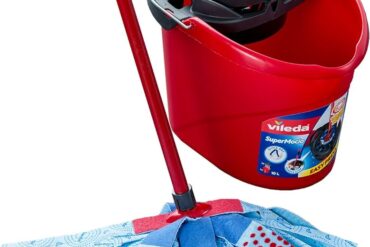Chiko Rolls: The Ultimate Guide for Parents on This Classic Australian Snack
Hello, amazing parents! Are you on the lookout for information on Chiko Rolls – that crispy, delicious, and oh-so-iconic Australian snack that has become a staple at local takeaways and footy matches? Well, buckle up, as we’re about to embark on a delightful journey through the history, nutritional facts, and fun ways to incorporate Chiko Rolls into your family’s eating plan. ?
What Exactly Are Chiko Rolls?
Intrigued by what Chiko Rolls really are? Let’s dive into their crispy exterior and discover their savoury interior. Chiko Rolls are an Australian fast-food snack that first made their appearance back in 1951. They are a thick, egg roll-like creation filled with a mixture of diced vegetables, beef, barley, and seasonings, all wrapped in a tube of egg, flour, and dough that’s deep-fried to golden perfection. ?
The Origin Story: How Chiko Rolls Became an Aussie Fav!
It all began at the Wagga Wagga Agricultural Show, where the Chiko Roll first appeared under the spotlight, soon becoming Australia’s answer to the American corn dog. The snack was created by Frank McEncroe as a meatier, easy-to-eat alternative to the pies and pasties that required a plate and a fork. McEncroe’s invention was a massive hit, and before long, Chiko Rolls were being sold at every sporting event, beach, and fair across the country.
Nutritional Breakdown: What Are You Feeding Your Kids?
As parents, we’re all about making sure what our kids eat is not just delicious, but nutritious too. A standard Chiko Roll consists of carbohydrates, protein, fats, and a range of vegetables. Here’s a comprehensive breakdown of the nutritional content so you can stay informed:
- Calories: A typical Chiko Roll contains around 350-400 calories, depending on its size and specific ingredients used.
- Proteins: It has approximately 10-15 grams of protein which is essential for your child’s growth and muscle development.
- Fats: There are about 15-20 grams of fat in a roll, some of which are saturated fats from the deep-frying process.
- Carbohydrates: With around 40 grams of carbs, Chiko Rolls provide a good source of energy which is crucial for active, growing children.
- Fibre: The vegetable content contributes to dietary fibre, important for digestion.
While a Chiko Roll can fit into a balanced diet, it’s essential to consider its place among other food choices your family makes during the day. Moderation is key! ??
Including Chiko Rolls in a Balanced Diet
If your kids are clamouring for Chiko Rolls, don’t fret. It’s all about balance and making smart choices. You can enjoy Chiko Rolls as an occasional treat within a diet that’s rich in fruits, vegetables, whole grains, and lean proteins. Accompany a Chiko Roll with a fresh, green salad or some steamed veggies to add nutritional value to the meal. And why not try making homemade versions using less oil or baking instead of frying? We’ll explore these tips and more later on in our guide.
Mindful eating and understanding Chiko Rolls’ place in your family’s diet plays an important role in enjoying this Aussie classic without the guilt. Stay tuned as we delve deeper into creative, healthier versions of Chiko Rolls, fun facts to share with your kids, and more tips on how to enjoy them responsibly.
Stick around, dear parents, for the next portion of our chirpy Chiko Roll chat where we will unwrap more delightful insights and advice on this culinary creation from Down Under. Remember, it’s not just about feeding our precious little ones, but about creating joyful moments around food that they’ll cherish forever!

5 Things Parents Should Know When Preparing Chiko Rolls
1. Understanding the Ingredients
Before heating up that oil, it’s important to peek inside the roll. Chiko Rolls are primarily made from wheat flour, cabbage, barley, carrot, beef, and seasonings. Some store-bought varieties may contain additives or preservatives—make sure to check the label if you’re conscious about these components.
2. Cooking Methods Matter
Typically deep-fried, Chiko Rolls can be a bit heavy on the oil. However, you can bake them as a healthier alternative! Pop them in the oven on a lined baking tray and cook according to the package instructions, until they’re crispy and golden brown. If you have an air fryer, that’s a fantastic compromise, giving you the crispiness with much less oil.
3. Homemade Healthy Twists
Ever considered making your own Chiko Rolls? You can swap out the beef for leaner meat options like chicken or turkey or go vegetarian with lentils or chickpeas. Use wholemeal flour for the wrapping, and add a rainbow of different veggies for an extra nutritional punch. Bonus: involve the kids in the preparation for a fun kitchen activity!
4. Serving Suggestions
How you serve Chiko Rolls can significantly affect their healthiness. Partner them with a side of fresh, crunchy salad, or colorful, steamed vegetables to round out the meal. This not only adds essential vitamins and minerals but also helps to fill up little tummies with good stuff!
5. Moderation is Key
Chiko Rolls are a treat, and like all treats, they should be enjoyed in moderation. Include them occasionally in your meal plan and always serve them as part of a balanced meal. Teach your kids about portion sizes and the importance of a varied diet that’s full of nutrient-rich foods.
Armed with these tips, you’re now ready to introduce Chiko Rolls to your family in a fun and balanced way, ensuring those snack times are happy, delicious, and nourishing! So go ahead and share this quintessential Aussie snack with your loved ones, and watch as they revel in the flavors of this cherished Aussie treat!
For more great articles please see here. For more information see here
Disclaimer
The articles available via our website provide general information only and we strongly urge readers to exercise caution and conduct their own thorough research and fact-checking. The information presented should not be taken as absolute truth, and, to the maximum extent permitted by law, we will not be held liable for any inaccuracies or errors in the content. It is essential for individuals to independently verify and validate the information before making any decisions or taking any actions based on the articles.




